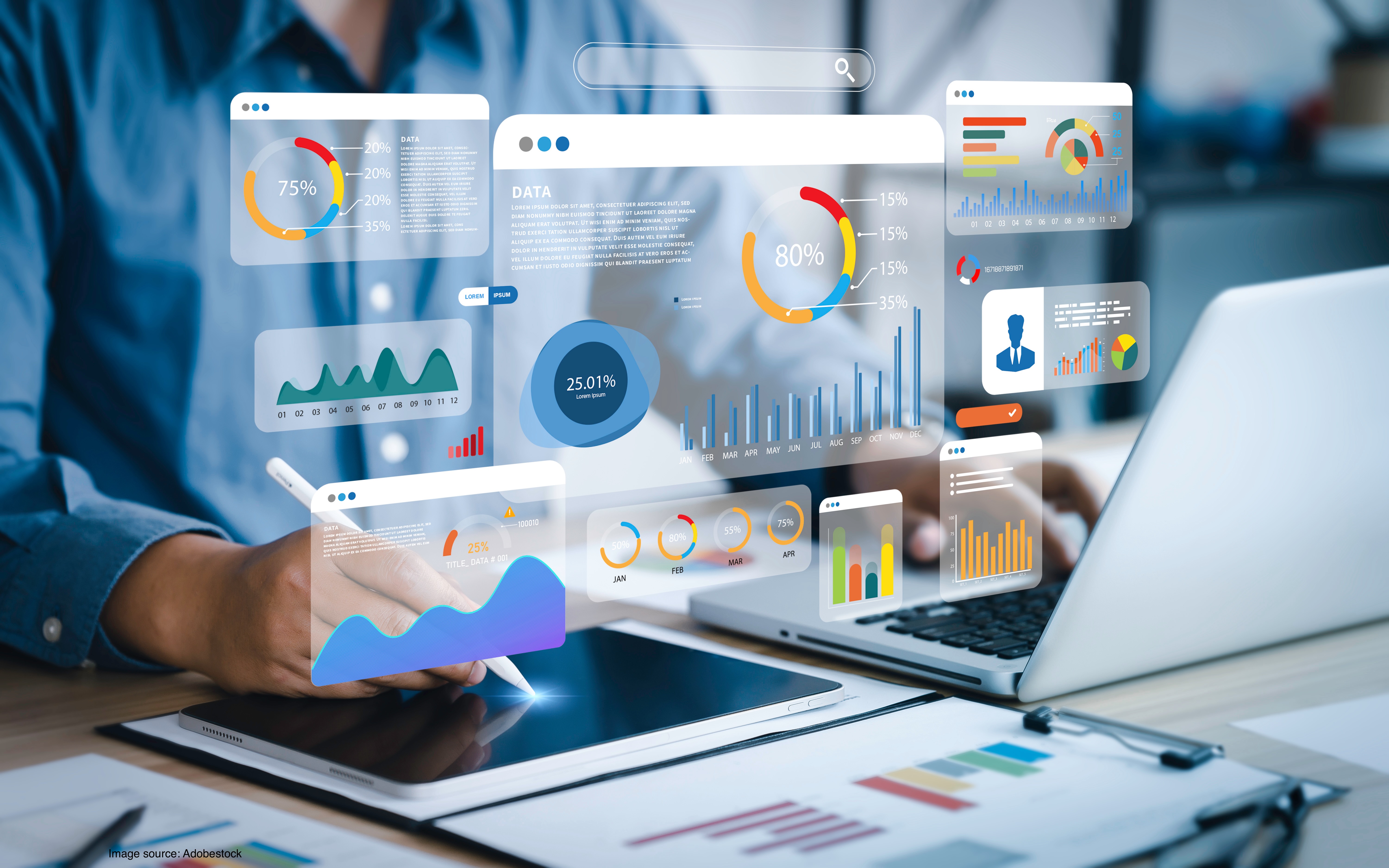Decoding Data: Navigating Business Analytics in the IT Terrain
- April 23, 2024
- Posted by: Aanchal Iyer
- Category: Business Intelligence

To stay ahead in business, it is crucial to stay relevant in the ever-evolving dynamic marketplace. In today’s digital landscape, business analytics is a powerful tool that can offer key insights to keep an organization at the forefront of the IT industry.
Leaders within the IT space should develop a thorough understanding of what business analytics is and how to apply it. This is the main difference between a good growth or stability strategy as opposed to an excellent one. Let us first understand what is business analytics.
Understanding Business Analytics
Business analytics is the collation and analysis of business-relevant data to identify trends, patterns, and consumer behaviors. It is primarily used for the development of business strategies depending on these identified trends and patterns.
Business analytics comprises several core processes, which include:
- Understanding the objectives behind the analysis
- Selecting the right analytical methodology to accomplish those goals
- Collating data, frequently from various systems
- Cleaning the data and then storing that data in a single space, such as a data warehouse
Benefits of Business Analytics that Increase Profitability
Following are the essential benefits of business analytics for organizations, each involving possible profitability boosts:
- Enhances business decision-making: Analytics removes the guesswork, which in turn decreases potential financial loss.
- Enhances operational efficiency: Analytics can disclose vulnerabilities in processes such as supply chain issues.
- Improves customer outreach: Analytics can help reach and attract potential customers in a more personalized way.
- Alleviates risk: Analytics empower organizations to detect risk factors and take pre-emptive measures accordingly.
- Enhances security: Analytics can identify vulnerabilities in a business’s system infrastructure.
Types of Business Analytics
There are four main types of business analytics:
- Predictive analytics interprets data to forecast future outcomes, uses statistical models and Machine Learning (ML), and predicts future consumer opinions and behaviors.
- Descriptive analytics interprets past data to identify trends and identifies consumer behavior patterns.
- Diagnostic analytics reviews past performance to identify what influences specific trends, uses tactics like data mining and correlation and leverages algorithms to determine the likelihood of recurring influential elements.
- Prescriptive analytics makes recommendations on how to handle future scenarios based on past data and proposes specific actions for accomplishing optimal results.
Why Deploy Business Analytics in the IT Space
Business analytics plays a crucial role in the IT space for several reasons:
Data-Driven Decision Making
In the IT industry, decisions concerning product development, resource allocation, project management, and strategy formulation benefit significantly from data-driven insights. Business analytics enables IT professionals to analyze huge amounts of data from various sources to make informed business decisions.
Performance Monitoring and Optimization
Infrastructure and IT systems offer huge amounts of data related to performance metrics, uptime, response times, and resource utilization. Business analytics enables IT professionals to monitor and analyze this data in real-time to detect bottlenecks, enhance system performance, and address issues proactively.
User Experience Enhancement
Understanding user behavior, preferences, and pain points is critical for delivering a seamless and satisfying digital experience. Business analytics provides IT teams with insights into user interactions, feedback, and engagement metrics, enabling them to tailor products, services, and interfaces to meet user needs and preferences effectively.
Resource Allocation and Capacity Planning
IT departments frequently face challenges concerning capacity planning, resource allocation, and budget management. Business analytics helps IT leaders analyze historical data, project future demand, and enhance resource allocation to guarantee efficient use of infrastructure, manpower, and financial resources.
Risk Management and Security
Cybersecurity threats and data breaches are significant risks to organizations operating within the IT space. Business analytics help IT security professionals analyze trends, identify anomalies, and detect potential security breaches real time. By leveraging advanced analytics techniques, IT teams can enhance threat detection, incident response, and risk mitigation efforts.
While working within the IT sector, it is important to understand the difference between data science and business analytics as both fields involve analyzing data to derive insights and make informed decisions.
Understanding the Difference Between Data Science and Business Analytics
Data science concentrates on the analysis of data. This analysis offers information that can give new insights. There are several similarities between data science and business analytics. Both focus on data analysis and use data to gain insights by leveraging statistics-driven methodologies. However, the following are the main differences between data science and business analytics:
Application of Data
Data science and business analytics are fundamentally different fields in different ways. Data science concentrates on what causes the patterns and very rarely makes any recommendations concerning business strategy. However, business analytics concentrates on the current and possible impact of trends and uses insights to make recommendations regarding business strategies.
Statistics
Data science leverages statistics to understand the effectiveness of algorithms that are built to collate data. Business analytics, on the other hand, makes use of statistics to recognize trends and make strategic suggestions.
Data Types
Data science uses both structured and unstructured data to design algorithms. The structured data is organized through a database, and the unstructured data is in its original database. Business analytics mainly leverages structured data for trend analysis.
Conclusion
Business analytics is crucial in the IT space as it empowers organizations to make use of data-driven insights for performance optimization, decision-making, user experience enhancement, resource management, risk mitigation, and strategic planning.
Aretove, as a leading data services company, plays a pivotal role in empowering businesses with comprehensive business analytics solutions. By leveraging advanced analytics techniques and cutting-edge technologies, Aretove allows organizations to unlock the full potential of their data. From data collation and integration to data cleaning and preparation, Aretove ensures that businesses have access to accurate and reliable insights. Also, Aretove offers Machine Learning (ML) and AI solutions tailored to specific business needs, enabling businesses to harness the predictive power of their data for competitive advantage.
